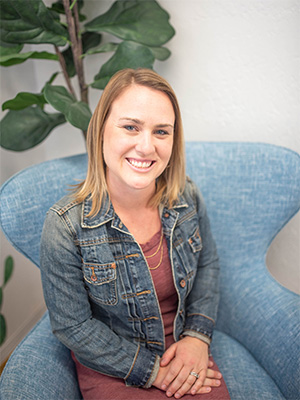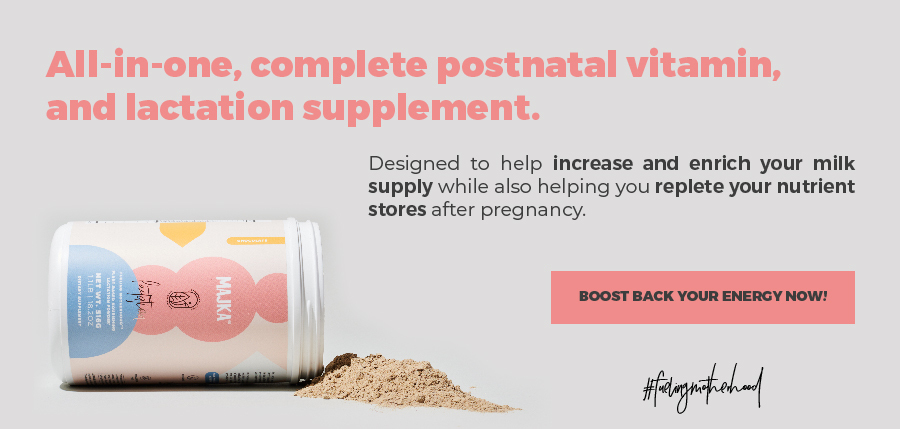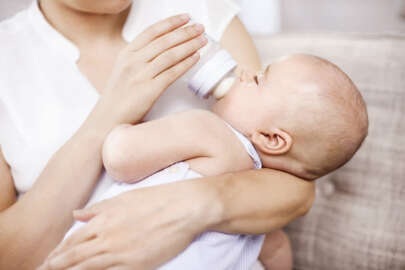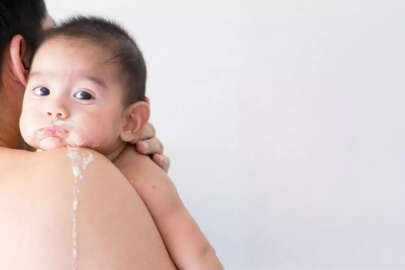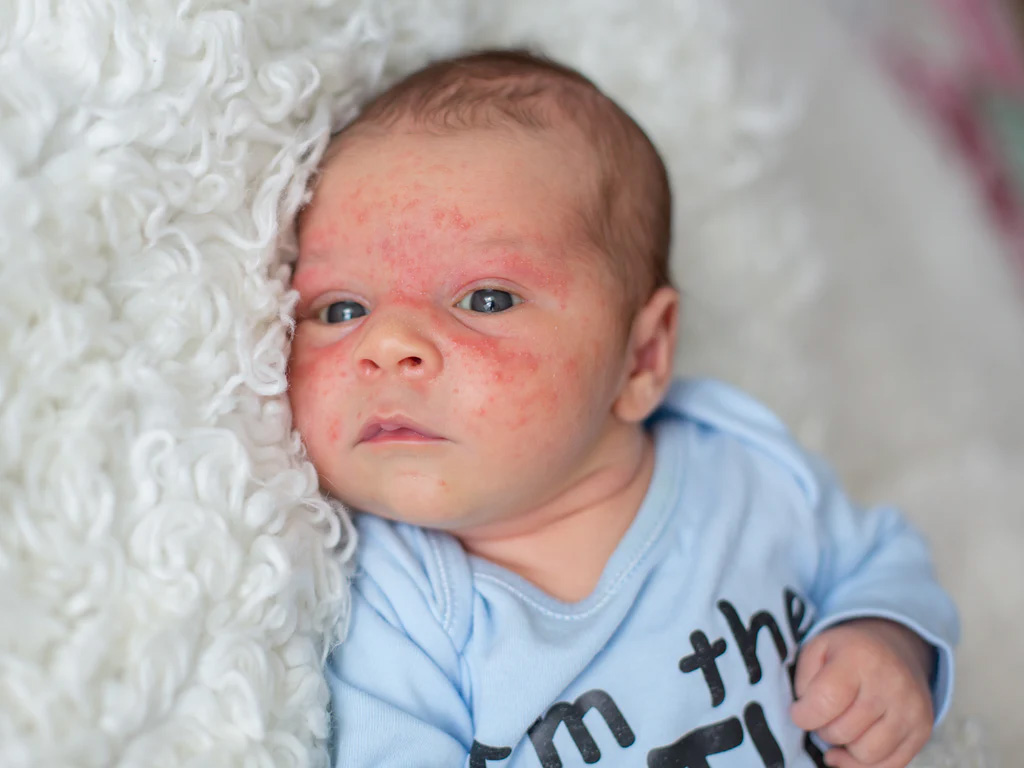
When you have a newborn, you will see that there are a lot of things happening in your baby’s body as he/she is growing up. Sometimes you may not understand why some things are occurring or if they are ok, this could happen when you see acne on your baby’s skin.
In this article, we will tell you all you need to know about baby’s acne and other newborn’s rashes so, if you see them, you know what is about and the things that you could do.
What is baby acne?
Acne is a condition that your baby may have, it is very common, temporary and isn’t harmful for your baby’s health. It often develops within the first two to four weeks after birth and it is shown by blackheads and pimples.
- Pimples can appear on a baby’s nose, cheeks and forehead during the first month of age.
- Hair follicle pimples frequently show around 6-weeks of age and most likely clears on its own.
Your baby’s acne may appear worse before it starts to improve. The good news is that pimples are not itchy and do not bother your baby. It usually clears up on its own without scarring.
What does baby acne look like?
Baby acne can look like small red or white bumps on your baby’s cheeks, nose and forehead. Many babies also develop tiny white bumps on the nose, chin or cheeks. These are known as milia.
- Milia in baby´s: milia is not the same as acne, and it is more common as it is seen in nearly half of newborn babies at birth. Its lesions appear on your baby´s face, scalp, and upper part of the torso; it is what happens when dead skin cells get trapped on the skin rather than falling off. This causes the tiny, white coloured, pearl-like bumps on the skin of the baby and they usually disappear spontaneously.
Why does my baby have acne?
When your baby is born, the skin barrier isn’t fully developed until he/she is at least one year old, which makes the skin more permeable and reactive. Your babies’ skin then, is thinner, has less hair and is less firmly attached than your skin.
It’s common for your baby to develop rashes when he/she is a few days old as the skin starts to adapt to its new environment.
Baby acne, for example, is a type of rash that develops on a newborn’s skin. Your baby’s acne may also be related to hormone changes that occur in you during pregnancy.
As though, there isn’t an exact cause that has been found about neonates acne, some studies relate it with an inflammatory response to the saprophytic yeast Malassezia and it’s mentioned to be more common in boys.
However, the final agreement is that baby’s acne is normal and not harmful for your baby’s health.
What should I do about my baby’s acne?
If your baby has acne, there is no need to worry as your baby will not be in discomfort, this condition is not serious and it will clear on its own.
But we understand that you are aware of everything that is going on with your baby and that you may feel more comfortable taking some action, so here are some things that you can do to help your baby with this rash:
- Gentle wash with tepid water.
- Avoid greasy moisturizers.
- Avoid over washing as your baby has delicate skin that can dry out easily with detergents.
- Do not pick, squeeze or burst any pimples. (this could make it worse or leave scars).
- Do not use any products that are not designed for baby use or that aren’t fragrance-free.
If pimples or blackheads appear after your baby is 4 months old, or if you see any signs of infection or that your baby is not well let your healthcare provider know.
Other rashes that my baby could have
Baby acne and Milia are very common rashes that appear in newborns, but you may also found on your baby’s skin:
- Miliaria: it’s a heat rash that appears when there is an occlusion of your baby’s sweat ducts. They are mostly shown in your baby’s neck, groins and armpits, but they also can show in your baby’s face. The recommendations for this rash is to remove your baby from a heated humid environment; you can also apply cool compresses or do a cool bath. If the condition does not resolve, call your doctor to get proper treatment regarding your baby´s case.
- Pityrosporum Folliculitis: is a rash that commonly affects in the first weeks of life, caused by the increased activity of your baby’s sebaceous glands that causes inflammation and folliculitis on your baby’s cheeks, nose and forehead; it is not itchy. Will resolve within weeks without treatment.
- Cradle cap it may appear during the first few months of birth and it doesn’t bother your baby. It is the appearance of crusty, yellowish patches on your baby’s scalp (and sometimes eyebrows). You can reduce it by using a gentle moisturizer, washing with a mild baby shampoo and gently brushing with a soft toothbrush to loosen the scales.
*If the cradle cap becomes itchy, inflamed, infected, swells, bleeds or spreads, call your doctor as soon as possible to get proper treatment.
In Breastfeeding 101 we hope this information has been a great help for you regarding understanding why your baby may develop acne or other rashes, and what you can do about it. If you want to find out more about baby concerns we love to invite you to follow all our content.
If you want to deepen more on the subject of baby’s acne, here are some of the sources that made this article possible:
Common infant skin rashes I PEBBLES
Erythema Toxicum Neonatorum I Patient
How to Use Breast Milk to Treat Baby Acne I Healthline
Infantile acne I National Library of Medicine
Infantile Acne I National Library of Medicine
Is that acne on my baby’s face I AAD
Milia in Babies I News Medical Life Sciences
Neonatal and infant skin care I The Royal´s Children Hospital Melbourne
Neonatal Acne (Acne – neonatal and infantile) I DermatologyAdvisor
Skin findings in newborns I Medline Plus
Skins lesions in the newborn and infant I UpToDate
Annie Rueb


